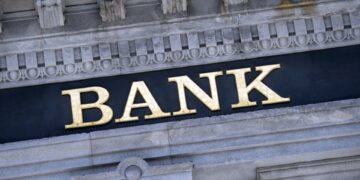
Image Credit: Supplied
The Covid-19 pandemic has made a profound impact on people and industry worldwide. In the case of banks, in addition to managing their own businesses, banks have had to assume a social responsibility to help customers and communities get through the crisis. Be it transmitting massive government relief packages, deferring loan repayments, or encouraging digital consumption, banks have had to rise to the occasion, even while having to manage their own challenges around rising non-performing assets, shrinking growth rates, and declining valuations.
The pandemic has essentially accelerated the multidimensional disruption banks have been facing due to a confluence of several forces. On the economic front, banks have had to operate amids shrinking GDPs, low-to-negative interest rate regimes, unemployment, and a slowdown in private investments, among others. On the political front, geopolitics, protectionism, and uncertain global trade dynamics have impacted the trade finance business. On the regulatory front, things haven’t been easier for banks either, with higher capital adequacy norms, new Open Banking regulations (such as Payment Services Directive 2), and a host of other laws covering consumer rights, data privacy, security, anti-money laundering, and terror financing, which imply massive rise in cost and compliance burdens on banks.
Further, new digital technologies such as cloud, API, AI, and blockchain are enabling new competitors to enter with innovative, low-cost, disruptive models to threaten incumbent banks that are still on legacy technology. As a result, banks are facing increased competition, especially from non-traditional players such as challenger banks, fintechs and technology giants such as Apple, Google, and Alibaba. From a social perspective, the dynamism of customer expectations, their access to information, and ability to vocalise demand is unprecedented; add to this varying demographic and population shifts across markets, which present challenges and opportunities to banks.
A delicate balancing act
Clearly, things are poised to get more challenging, as the Covid-19 led economic contraction aggravates many of these forces. And, banks have to do a delicate balancing act between customers’ credit needs, employees’ safety concerns, government directives, and societal expectations. At the same time, they are required to keep their costs under control while providing for future investments. In fact, McKinsey estimates that the banking industry will lose cumulative revenues worth $1.5 trillion (Dh5.5 trillion) to $4.7 trillion between 2020 and 2024 and may take up to five years to recover to pre-pandemic return to equity levels.
These conditions are making it exceedingly difficult for bank executives to take decisions with conviction. Leading consulting firms have recommended several frameworks to guide action in these times. But banks will need to consider these frameworks in their unique context before expecting any value from the frameworks. They need to embrace first principles thinking, which helps to break a complex problem into its basic elements to achieve clarity and remain certain amid all the uncertainty. Every bank should apply this thinking in its own context, a context that is defined by its purpose. Revisiting and aligning closely with the organisation’s original purpose, thus, would be a more sound way to guide a bank’s decisions.
True to the corporate purpose
Interestingly, a recent KPMG CEO survey conducted in the pandemic period supports this view. As per the survey, 79 per cent of CEOs said they felt a stronger emotional connection to their corporate purpose since the crisis began. So, what then, should be a bank’s ideal purpose?
Consider, for a moment, the purpose of three banks from three different regions. ANZ Bank states, “Our purpose is to shape a world where people and communities thrive.” The NatWest Group states, “Our purpose is to champion the potential of people, families, and businesses.” And Bank of America says, “Our purpose is to help make financial lives better through the power of every connection.”
Clearly, most banks have rather similar purposes across the world, at the core of which is a genuine intention to improve the way their customers and communities manage their financial lives. That is, to enable their customers to bank better or to save, pay, borrow, invest, and insure better.
As banks revisit or strengthen their purpose to drive balance across stakeholder expectations, there are four evergreen priorities that they would do well to focus on. These are:
• Engage customers and employees constantly, to drive purposeful growth for their customers and themselves
• Maximise operational efficiencies, to reduce costs of servicing and be more sustainable
• Innovate continuously, to create new value and be competitive
• Drive continuous transformation, to stay relevant to evolving dynamics
Banks would be best positioned to achieve the above by leveraging the power of modern technologies to unlock new possibilities and leveraging talented teams and purpose-driven culture to unlock true potential.
The pandemic has no doubt deepened an array of challenges that banks have been facing prior to the crisis – depressed economics, uncertain geopolitics, tightening regulation, threat from new digital-attacker models, and changing customer expectations. But a black swan event of this magnitude also provides opportunities to clear obstacles like normal times cannot. Banks that have a clear focus and strategy built around the above priorities will be better able to manage diverse stakeholders’ expectations and will be on the road to recovery and growth, much earlier than others.
In summary, these are difficult times, but by adopting a purpose-driven path to transformation, banks will be able to recover in the short-term, thrive in the long run, and help create value for the communities they serve.
The writer is the Global head and Chief Business Officer of Infosys Finacle

This content comes from Reach by Gulf News, which is the branded content team of GN Media.








